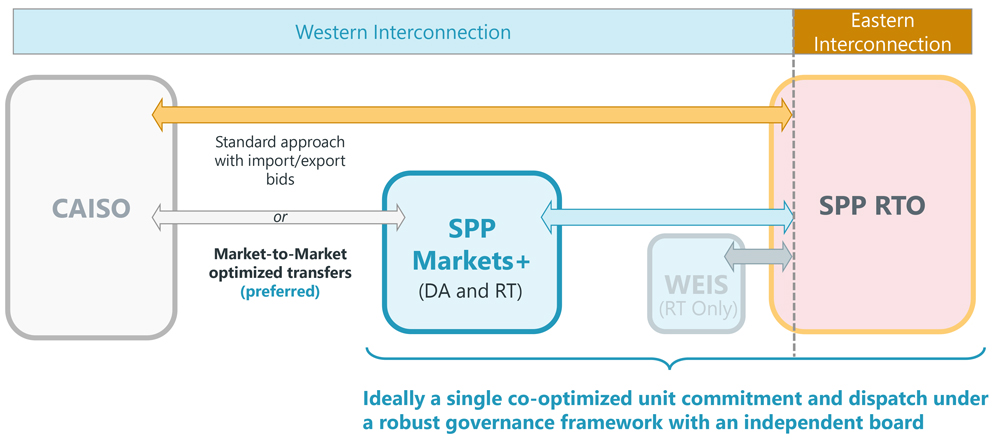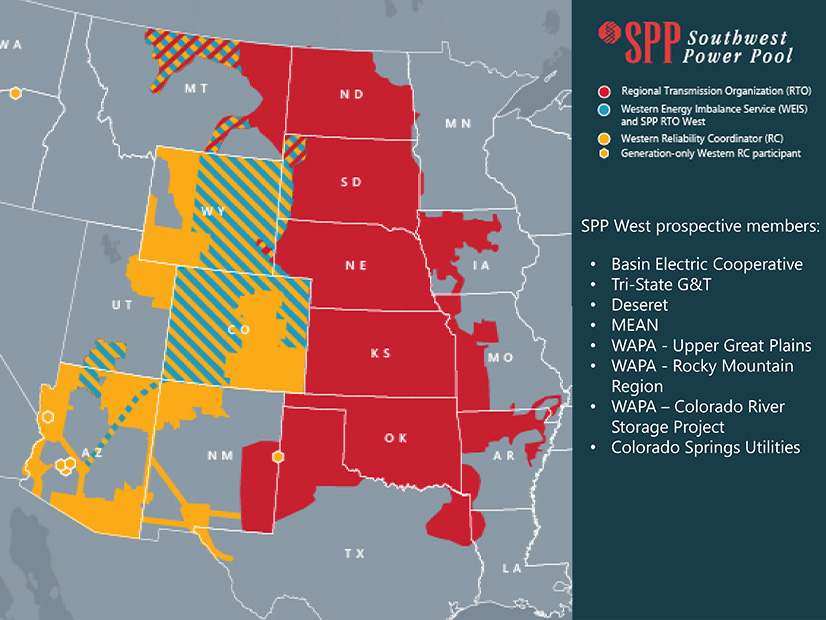SPP traces its emphasis on collaboration — with staff, members, regulators, other stakeholders and even grid operators — to the RTO’s beginnings 80 years ago.
In the early days after the attack on Pearl Harbor, 11 Southeastern utilities shared their energy resources to help fuel an Arkansas aluminum plant. SPP says that collaborative spirit is alive today as “we tackle emerging challenges, create the unimagined and build the grid of the future.”
“Responding to crisis and change is in our DNA,” CEO Barbara Sugg said in a pre-holiday letter to stakeholders, rounding out a year of growth and challenges.
Case in point: The response to February’s Winter Storm Uri, when SPP lost more than a third of its generating capacity to freezing conditions and resorted to the first load sheds in its history. Within a month, five teams of several hundred staff and stakeholders were working on a comprehensive review of the RTO’s actions during Uri to determine how it could better prepare for future extreme reliability threats.
The report, “A Comprehensive Review of SPP’s response to the February 2021 Winter Storm,” was released in July. Staff is already working on the report’s 22 recommendations addressing the root causes, and a task force has been formed to take on issues related to fuel assurance and resource planning and availability. The Improved Resource Availability Task Force, led by Arkansas Commissioner Ted Thomas, reports to the board and the Regional State Committee and will publish monthly status reports. (See SPP, Members Begin Response to February’s Winter Storm.)
“While still navigating a pandemic, you helped us literally weather the storm,” Sugg said.
Despite its disastrous consequences, Uri didn’t stop SPP from reaching its four goals for 2021: launching the Western Energy Imbalance Service (WEIS) market; restructuring stakeholder groups to make them more efficient and productive; beginning to reengineer transmission planning; and creating a new, five-year strategic plan.
That plan, Aspire 2026, “frames the process and distills” the strategy’s key elements using mechanisms to “track and report progress toward aspirations and make mid-course adjustments.” SPP engaged its board, members, regulators and staff leadership through the planning effort.
“The most important driver of the process was a sincerely held belief that our stakeholders should be aligned around the direction we intend to travel together,” the report says.
Aspire 2026’s five strategic opportunities, meant to “strengthen [SPP’s] core” capabilities and “change the game,” include:
- implementing the Holistic Integrated Tariff Team’s (HITT) 21 recommendations by 2026;
- optimizing SPP’s seams;
- expanding its Western services;
- using innovative transmission-planning processes; and
- anticipating and preparing for the grid of the future.
The HITT recommendations focus primarily on keeping market and transmission costs low, while the seams initiative allows SPP to build on its “recent intentional efforts” to maintain productive relationships with its neighbors. Sugg’s effort since becoming CEO in early 2020 to defrost the MISO relationship has paid dividends with the RTOs’ joint targeted interconnection queue study searching for interregional projects to alleviate their jammed generator interconnection queues. (See No MISO-SPP Joint Study in 2021.)
The innovative planning processes are expected to save $3-$4 million annually while also resolving growing stakeholder concerns about continued transmission investment amid rapid industry changes. That is why SPP is also working to improve its ability to anticipate grid changes so it can “proactively address, drive and shape” that change.

The grid operator is doing its part in the West, where it offers energy services to utilities in every state in the Western Interconnection. It provides RC services and its WEIS market, and is currently offering partial RTO services to several utilities in a region clamoring for RTOs. (See FERC Commissioners Opine on Western RTO.)
SPP is also administering the Northwest Power Pool’s Western Resource Adequacy Program (WRAP) for its 26 participants. Once fully implemented, the WRAP will help Western balancing authorities respond to potential generation shortages during critical hours as the region addresses the retirement of thermal resources and its growing reliance on variable renewable resources. (See Implementation Underway for NWPP’s Western RA Market.)
The grid operator intends to expand its RTO footprint and develop a Western market system that is fully integrated with its existing market system, thus achieving “meaningful, equitable value creation for new and existing members.”
“Market growth will provide more value to both load and generation in our market footprint,” the RTO says. “The West provides opportunities for greater access to diverse resources and to tap into larger markets with a demand for SPP’s generation.”
To that end, the RTO has quietly unveiled its Markets+ program, which it says is not simply a day-ahead market offering but a “conceptual bundle of services.” By centralizing day-ahead and real-time unit commitment and dispatch, SPP says Markets+ will provide easy transmission service across the footprint and set the stage for the reliable integration of renewable energy’s growth.
Staff presented the Markets+ model to interested participants during a virtual December meeting and plans to hold in-person forums in Phoenix, Portland and Denver by July. It is gathering information from interested parties, including the WRAP participants, as part of an extensive five-step process leading up to the program’s launch.
A year-end review of SPP would be incomplete without addressing another issue related to the Tariff’s Attachment Z2, which reimburses transmission customers that fund network upgrades.
Staff is preparing to claw back and refund $138 million in transmission-upgrade credits, dating as far back as 2008, as it waits on a response to its rehearing request of the D.C. Circuit Court of Appeals’ August ruling that FERC was correct in reversing a retroactive waiver it had granted the RTO over collecting Z2 upgrade costs. (See “SPP Asks for Z2 Rehearing,” SPP Markets and Operations Policy Committee: Oct. 11-12, 2021.)
“Our favorite topic from years gone by that we can’t get rid of … the gift that keeps on giving,” Sugg said in October. “This will be a major undertaking for SPP and our stakeholders.”




